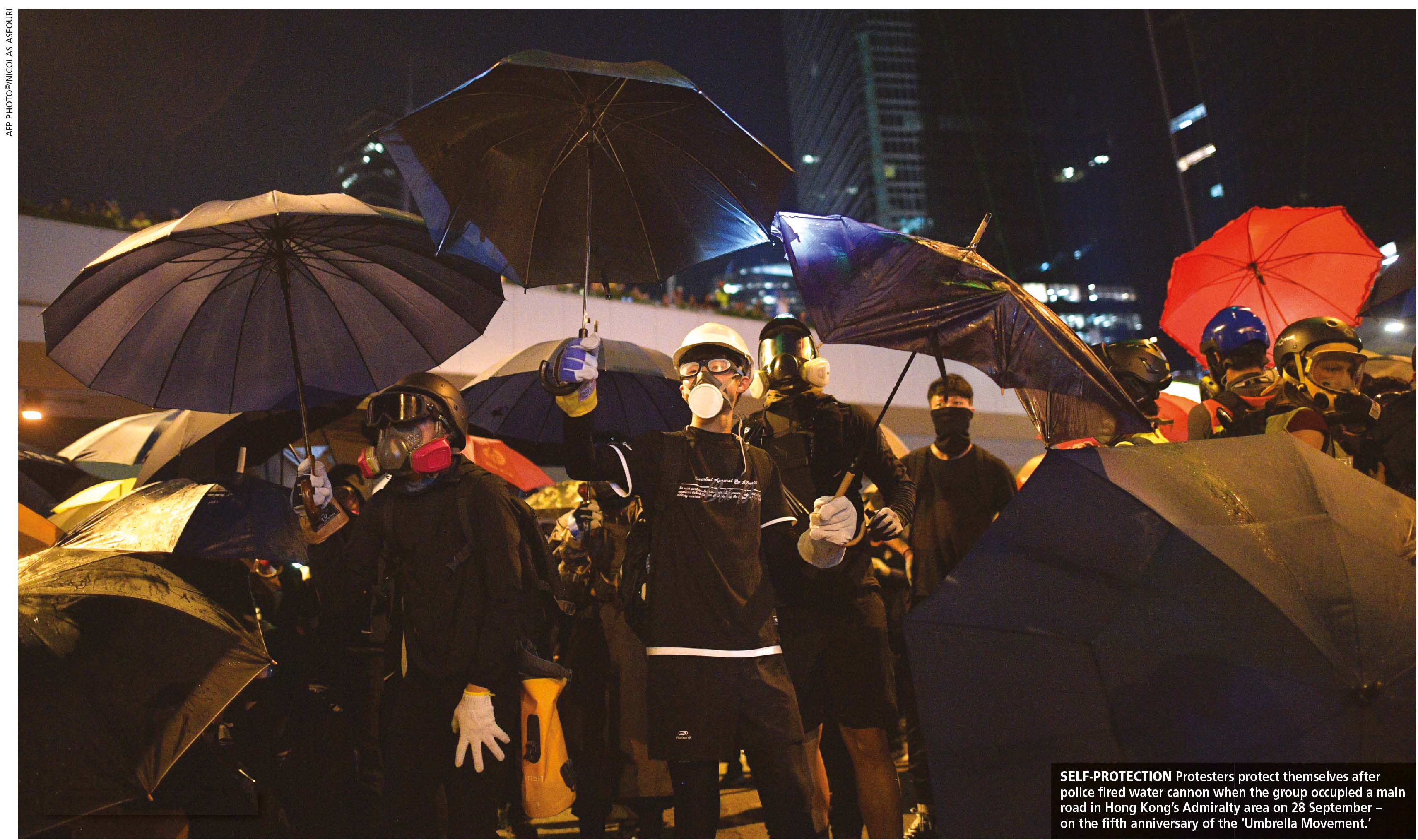HONG KONG UNDER SIEGE
UMBRELLAS AGAINST RUBBER BULLETS
BY Angelo Fernando
Street protests may be interesting to watch from a safe distance but you have to be up close for the adrenaline rush. I’ve come awfully close to some protests and a few of them were dangerously melodramatic – such as when protesters were prompted to abduct a faculty dean. The spectacle soon ended in a stalemate since both coordination and leadership were poor.
One incident that shook us most was when some students protesting a police presence on campus stormed the police station. The outcome was tragic and a student lost his life in that incident.
Activism has evolved in dramatic ways. In the late 1990s, the anti-globalisation movement took over urban centres like Seattle and London, demanding fair trade and human rights. This was in the pre-social media era but WiFi and text messaging helped activists to collaborate, coordinate and assemble.
The ubiquity of smartphones and encrypted communication now empowers all protests – from the 2011 events of Occupy Wall Street to Black Lives Matter, the antifa and Umbrella Movements, which latter reflects pro-democracy activism in Hong Kong. Barbed wire and rubber bullets don’t seem to limit citizens’ capacity to magnify their causes, and show up.

I’m writing this while sitting in a plane parked on a runway at the Hong Kong International Airport. Behind us are EasyJet, El Al and British Airways aircraft, all patiently waiting to be cleared for takeoff. Thankfully, no flights have been cancelled, though violent confrontations had ensued in the departure area only a few weeks ago.
Previously, TV monitors on the aeroplane showed news clips of confrontations around the city. The cameras focussed on watercannon that sprayed powerful jets of blue dyed water as police baton charged the protesters. The sea of black umbrellas seemed to be overpowered but the spirit of the movement wasn’t crushed.
The activists seemed well prepared and were pointing their cameras at the forces rallying against them. This revolution is not only being televised but broadcasters are livestreaming it as well. Cameras have become the destabilising tool: the centrepiece of any asymmetrical war.
Rubber bullets and watercannon may halt a protest but the closeups taken – not by mainstream only but grassroots media as well – help the protests gather momentum.
Looking down one side of Terminal 1, I see hundreds of young people slowly walking to the city centre. They have assembled outside the airport because that has been their target for weeks and the site of clashes with police.
Some wear gasmasks, many wear helmets, and carry backpacks and umbrellas. And there are plenty of them! Some have their faces covered with paper masks. The chaotic scene resembles a choreographed opening ceremony at the Olympics, as splotches of black and yellow umbrellas move in a synchronised manner across the street.
This is not an insignificant bunch of protesters. They are coordinated on message and seem to get their visuals right too. And they’re here to defy the tear gas, brave the baton charge and stand up to the rubber bullets for their beliefs.
And this is their moment to voice their demands for the complete withdrawal of a draconian law, which will ensure that Hong Kongers who are arrested for a range of crimes in the territory will be extradited to China to face trial on the mainland rather than in Hong Kong.
They are fighting for their freedom and lives. Let’s not treat this as yet another protest march; let’s not be indifferent to it.



